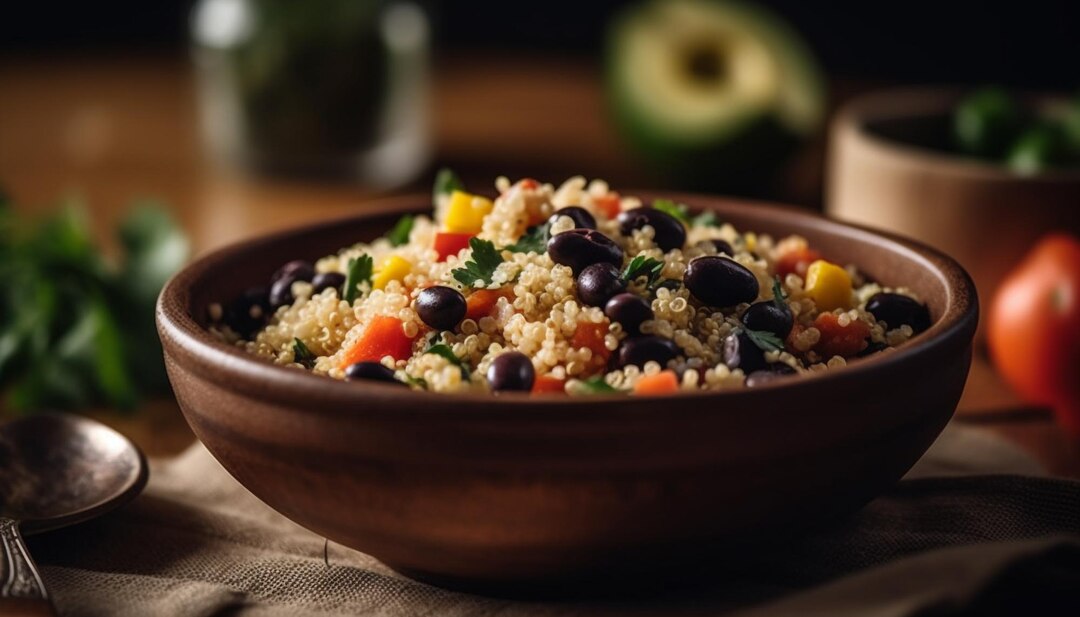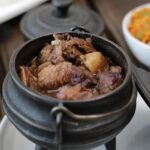Rice has long been a staple grain in many cuisines around the world, but for those looking to diversify their diet or reduce their carbohydrate intake, there are plenty of alternatives to explore. From ancient grains to gluten-free options, the realm of rice alternatives offers a variety of flavors, textures, and nutritional profiles. In this article, we’ll delve into ten delicious rice alternatives that can add excitement and versatility to your meals.
- Quinoa:
Quinoa, often referred to as a “superfood,” is a nutrient-rich grain that originated in the Andean region of South America. It is high in protein, fiber, and essential nutrients such as iron and magnesium. Quinoa has a slightly nutty flavor and a fluffy texture, making it an excellent substitute for rice in salads, pilafs, and grain bowls. - Cauliflower Rice:
Cauliflower rice has gained popularity as a low-carb, keto-friendly alternative to traditional rice. Made by grating or processing raw cauliflower into small, rice-like pieces, cauliflower rice is a versatile ingredient that can be used in stir-fries, fried rice, and risottos. It has a mild flavor and pairs well with a variety of seasonings and sauces. - Bulgur:
Bulgur is a whole grain made from cracked wheat that has been partially cooked and dried. It is commonly used in Middle Eastern and Mediterranean cuisines to make pilafs, salads, and tabbouleh. Bulgur has a chewy texture and a nutty flavor, making it a satisfying rice alternative that is rich in fiber and protein. - Farro:
Farro is an ancient grain with roots in the Mediterranean region. It has a hearty texture and a slightly nutty flavor, similar to barley or wheat berries. Farro is rich in fiber, protein, and essential nutrients such as iron and magnesium. It can be used in soups, salads, and grain-based dishes as a nutritious substitute for rice. - Wild Rice:
Despite its name, wild rice is not technically rice but rather the seed of a grass species native to North America. It has a distinct nutty flavor and a chewy texture, making it a popular choice for pilafs, stuffing, and side dishes. Wild rice is high in protein, fiber, and antioxidants, making it a nutritious alternative to traditional rice varieties. - Millet:
Millet is a gluten-free ancient grain that has been cultivated for thousands of years. It has a mild, slightly sweet flavor and a fluffy texture when cooked. Millet is rich in nutrients such as magnesium, phosphorus, and antioxidants. It can be used in a variety of dishes, including porridge, pilafs, and salads. - Buckwheat:
Despite its name, buckwheat is not related to wheat and is naturally gluten-free. It is a nutrient-dense grain that is high in protein, fiber, and essential minerals such as manganese and magnesium. Buckwheat has a nutty flavor and a chewy texture, making it ideal for use in dishes like porridge, pancakes, and stir-fries. - Barley:
Barley is a versatile grain that has been cultivated for thousands of years. It has a chewy texture and a nutty flavor that pairs well with a variety of ingredients. Barley is rich in fiber, protein, and essential nutrients such as selenium and copper. It can be used in soups, stews, salads, and risottos as a nutritious alternative to rice. - Sorghum:
Sorghum is a gluten-free ancient grain that is widely cultivated in Africa and Asia. It has a neutral flavor and a chewy texture, similar to pearl barley. Sorghum is rich in fiber, protein, and antioxidants, making it a nutritious choice for grain-based dishes. It can be used in salads, pilafs, and porridge as a rice alternative. - Amaranth:
Amaranth is a gluten-free pseudo-grain that is native to the Americas. It is high in protein, fiber, and essential nutrients such as calcium and iron. Amaranth has a slightly earthy flavor and a sticky texture when cooked, similar to risotto or polenta. It can be used in porridge, pilafs, and baked goods as a nutritious alternative to rice.
Exploring rice alternatives can add variety, flavor, and nutritional benefits to your meals while offering options for those with dietary restrictions or preferences. From ancient grains like quinoa and farro to gluten-free options like cauliflower rice and millet, the world of rice alternatives is vast and diverse. Incorporating these nutritious grains into your diet can enhance the culinary experience and support overall health and well-being.








